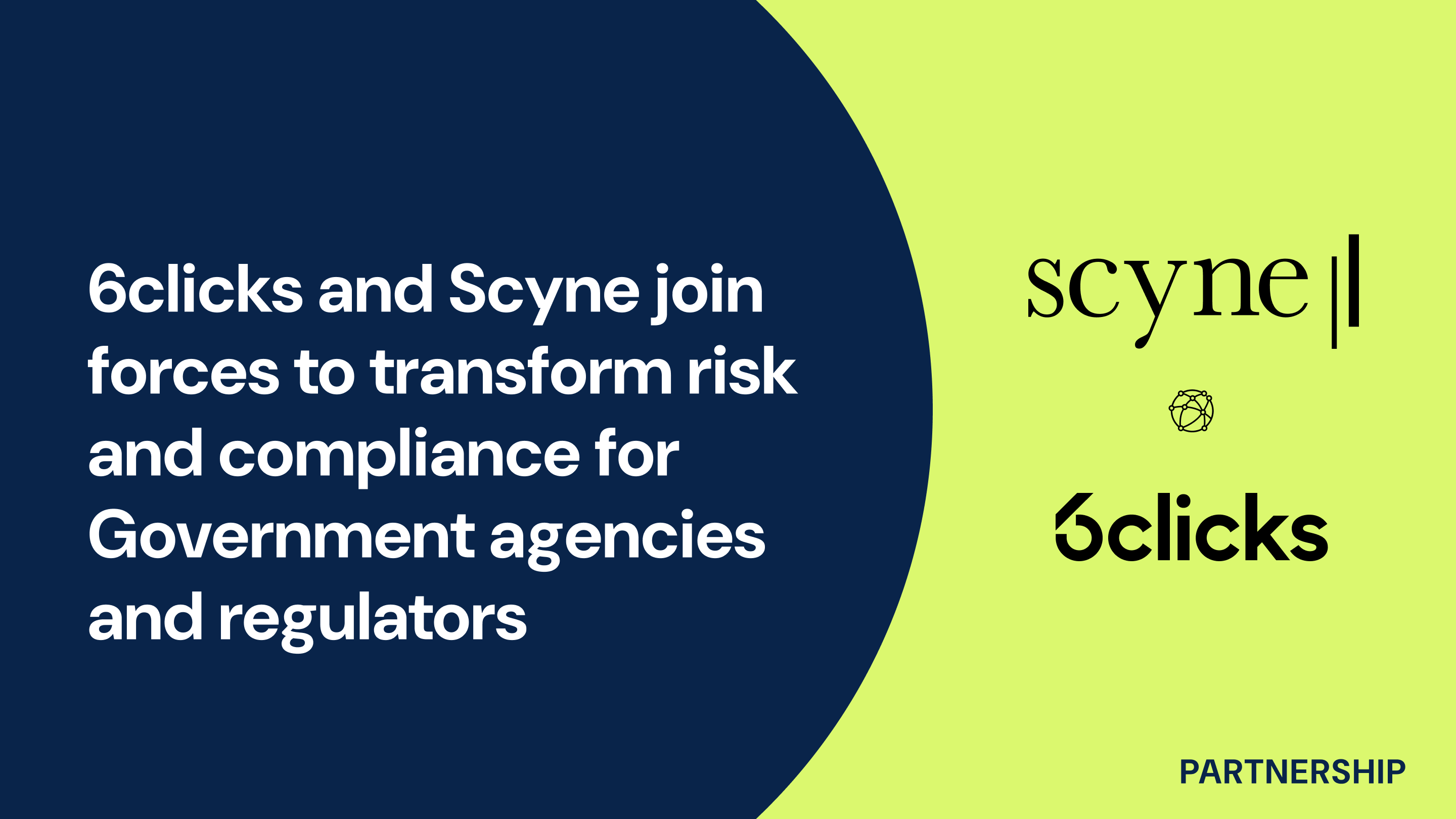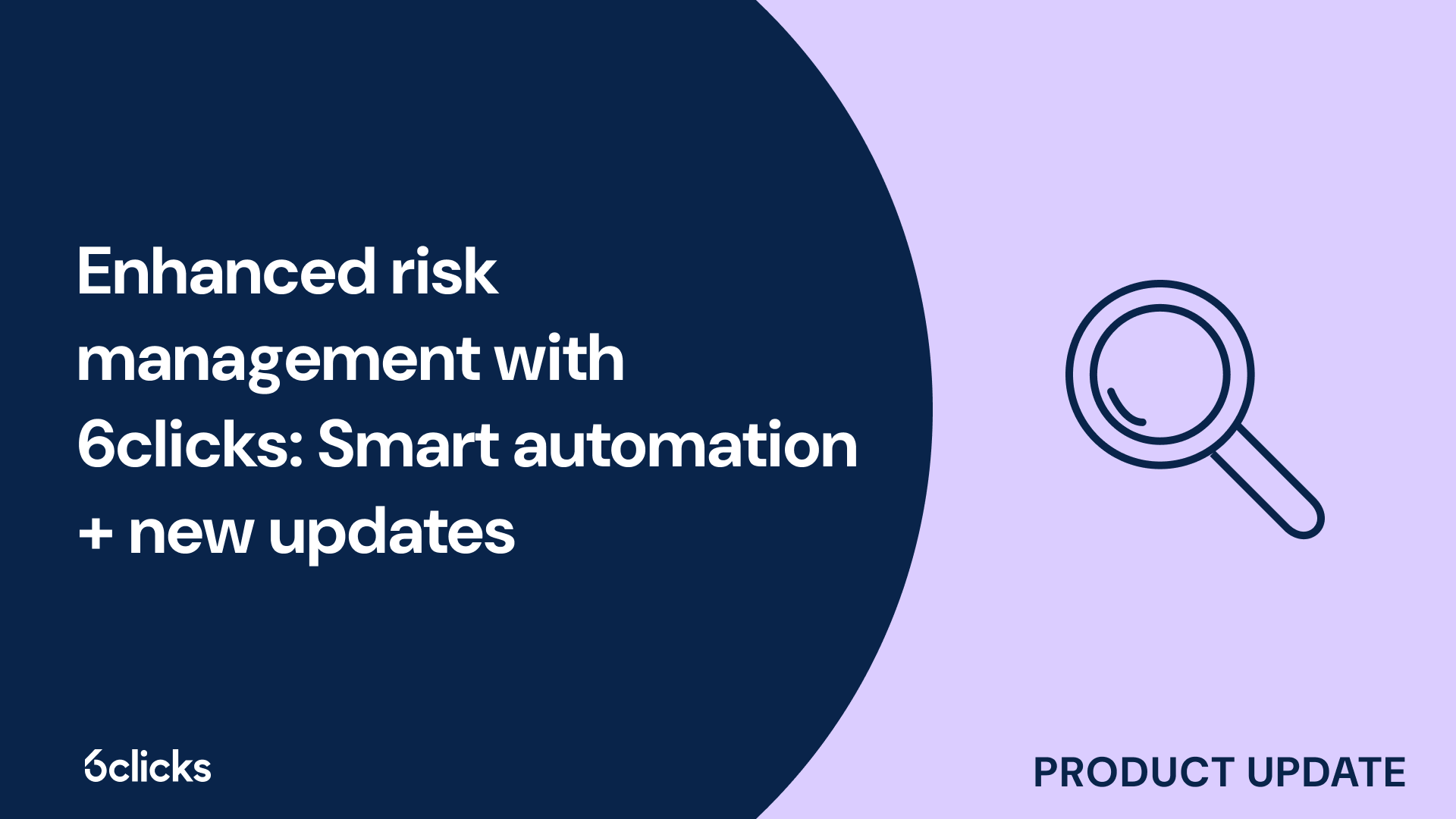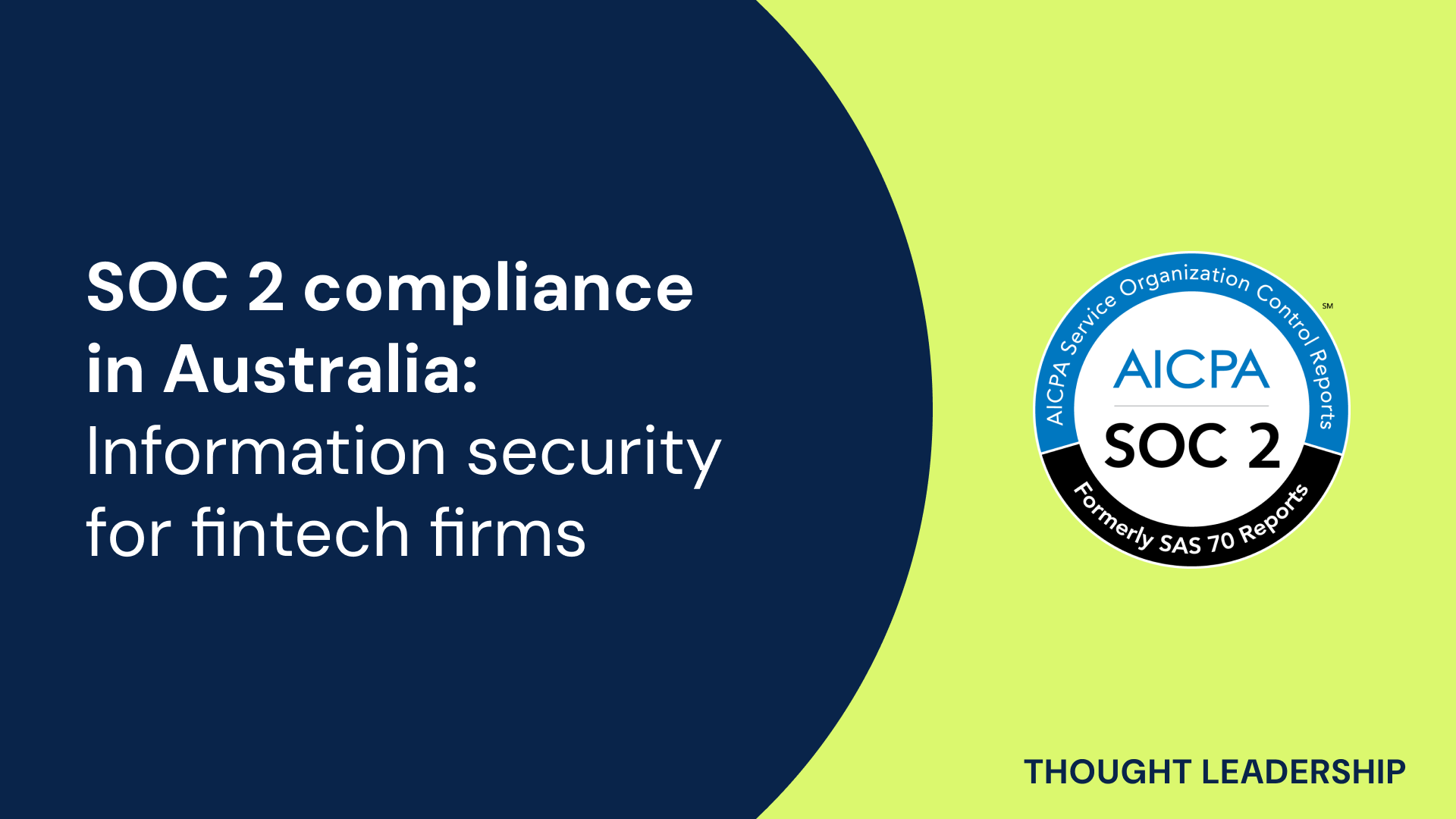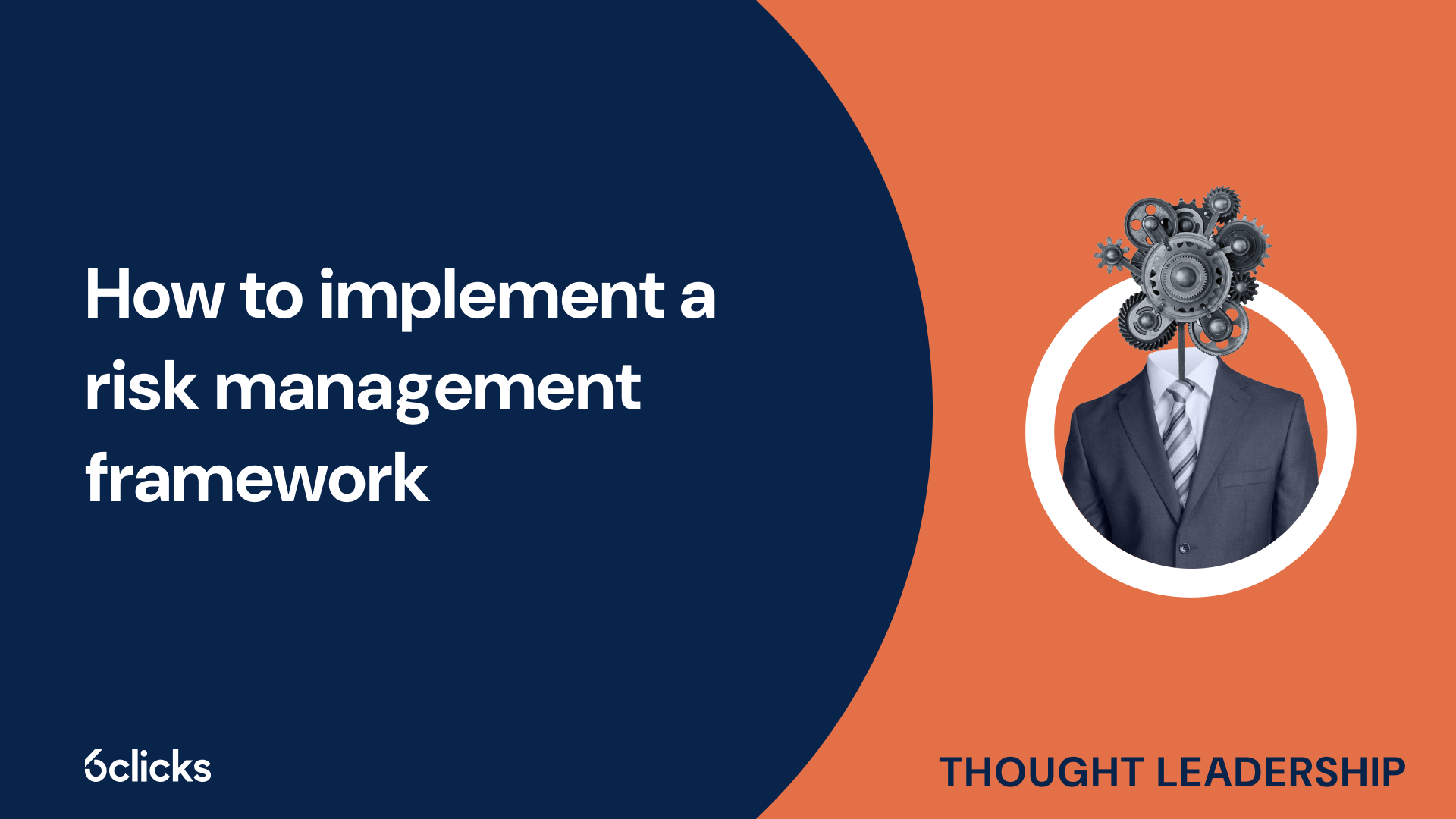Risk management for ISO 27001 and ISMS expert guide
Download the Risk Management for ISO 27001 & ISMS Expert Guide to master risk management practices, achieve compliance, and strengthen your information security. Start today!
-1.png?width=200&height=249&name=Group%20193%20(1)-1.png)
Risk management for ISO 27001 and ISMS expert guide
What is ISMS?
ISMS stands for Information Security Management System. It is a systematic and structured approach to managing sensitive company information to keep it secure and protect it from unauthorized access, disclosure, alteration, or destruction. An ISMS involves the development and implementation of a security policy, risk assessment processes, controls and measures to manage identified risks, and continuous improvement processes. It provides a framework of policies and practices that help organizations meet the requirements of various security standards, such as ISO/IEC 27001. ISMS helps organizations identify and mitigate security risks, comply with legal and regulatory requirements, protect intellectual property, ensure business continuity, and safeguard the privacy of personal and sensitive information. By adopting ISMS, organizations can maintain a high level of security, implement a holistic and structured approach to security management, and demonstrate their commitment to protecting their assets and stakeholders' information. Overall, ISMS plays a crucial role in preventing security incidents and protecting valuable information assets.
What does ISMS stand for in security?
ISMS stands for Information Security Management System. It refers to a systematic approach to managing sensitive company information to ensure its confidentiality, integrity, and availability. ISMS is designed to protect information from various risks, including unauthorized access, data breaches, and potential threats.
The purpose of implementing an ISMS is to set up and maintain a framework of policies, processes, and controls to manage the organization's overall information security risks. It establishes a structured approach to identifying and assessing security risks, implementing appropriate security measures, and monitoring their effectiveness.
One of the most recognized international standards for ISMS is ISO/IEC 27001. Certification to this standard provides assurance that an organization has effectively implemented a robust information security management system. It demonstrates the organization's commitment to continually improving its security practices and complying with regulatory and legal requirements.
Implementing an ISMS helps organizations protect not only their own sensitive information but also that of their customers, partners, and stakeholders. It enables a holistic approach to managing information security risks, ensuring the confidentiality, integrity, and availability of business-critical and proprietary information assets.
Systematic approach to information security management
A systematic approach to information security management is essential for organizations to effectively protect their sensitive information and mitigate security risks. By adopting a structured and methodical approach, organizations can identify, assess, and manage security risks in a proactive manner. This involves establishing a framework of policies, processes, and controls to ensure the confidentiality, integrity, and availability of information assets. By implementing a systematic approach, organizations can also ensure compliance with regulatory and legal requirements, as well as continuously improve their security practices. This approach enables organizations to take a proactive stance towards information security, systematically addressing potential vulnerabilities and implementing appropriate security measures. Through a systematic approach to information security management, organizations can maintain a robust security posture to protect their assets and maintain the trust of their stakeholders.
Risk assessment
Risk assessment is a crucial component of maintaining a secure environment in accordance with ISO 27001 standards. It involves identifying potential risks, analyzing their potential impact, and developing corresponding mitigation policies to address them.
The process of risk assessment begins with the identification of all possible security risks that may affect the organization's information assets. These risks can range from physical threats such as natural disasters or theft to cybersecurity breaches and data breaches. Once identified, the risks are analyzed to determine their likelihood and potential impact on the organization.
Based on the analysis, appropriate mitigation policies are formulated to treat the risks. ISO 27001 provides four ways to treat a risk: risk modification, risk avoidance, risk sharing, and risk retainment. Risk modification involves implementing preventive controls to reduce the likelihood or impact of the risk. Risk avoidance entails eliminating the risk by not engaging in activities that may expose the organization to it. Risk sharing involves transferring the risk to a third party, such as purchasing insurance. Risk retainment means accepting the risk without implementing any mitigation measures.
ISO 27001 also provides a comprehensive framework of information security controls in Annex A, which consists of 14 sections. These sections address different aspects of information security, including the management of assets, access control, cryptography, physical and environmental security, business continuity management, compliance, and more.
Security requirements and policies
Security requirements and policies are an integral part of an Information Security Management System (ISMS). They outline the measures and controls that are implemented to protect sensitive information and mitigate security risks.
To ensure the security of sensitive information, organizations establish a range of policies and procedures. Access controls are one such policy, which restrict and manage access to sensitive data based on the principle of least privilege. This prevents unauthorized individuals from accessing confidential information.
Encryption is another crucial measure employed to protect sensitive information during transmission and storage. By converting data into an unreadable format, encryption safeguards it from unauthorized access.
Regular security audits and assessments are conducted to identify potential security vulnerabilities. Risk assessments, in particular, are used to evaluate the likelihood and potential impact of security risks. This allows organizations to prioritize and address high-risk vulnerabilities, minimizing the potential damage.
To ensure compliance with security standards and regulatory requirements, organizations establish and enforce policies and procedures. By adhering to frameworks like ISO/IEC 27001, organizations can demonstrate their commitment to information security and safeguard against potential threats.
Security controls, measures, and processes
Security controls, measures, and processes form the backbone of an effective Information Security Management System (ISMS). These components are carefully designed and implemented to safeguard sensitive information and mitigate security risks.
Access controls are a fundamental security control that restricts and manages access to confidential data. By enforcing the principle of least privilege, access controls ensure that only authorized individuals can access sensitive information, reducing the risk of unauthorized data breaches.
Encryption is another critical security measure used to protect data during transmission and storage. By converting information into an unreadable format, encryption safeguards it from unauthorized access, ensuring confidentiality and integrity.
Intrusion detection systems, another essential security control, monitor network traffic and identify potential security breaches or unauthorized access attempts. These systems provide real-time alerts, enabling organizations to respond promptly and mitigate the impact of security incidents.
Well-defined incident response procedures are also critical for an effective ISMS. These procedures outline the steps to be taken in the event of a security incident, including containment, investigation, and recovery. By following these processes, organizations can minimize the impact of security incidents and restore normal operations efficiently.
Business continuity planning and disaster recovery plans
Business continuity planning and disaster recovery plans play a crucial role in ensuring the security and resilience of an organization's information systems. These plans help mitigate risks and ensure the continuity of critical business operations, even in the face of unforeseen incidents or disruptions.
Business continuity planning involves identifying potential risks and developing strategies to mitigate these risks, ensuring that essential business functions can continue during and after a disaster. This includes establishing alternate facilities, backup systems, and redundant infrastructure to minimize the impact of disruptions.
Disaster recovery plans, on the other hand, focus on the recovery and restoration of business operations after a disaster or incident. This involves defining incident response protocols, outlining the steps to be taken during and after the event, and establishing procedures for recovering data and systems.
By developing and implementing these plans, organizations can effectively respond to security incidents, minimize downtime, and maintain critical operations. Regular testing and review of the plans enable organizations to identify vulnerabilities and ensure that the plans remain up to date and effective.
Access controls & user authentication
In the context of Information Security Management Systems (ISMS), access controls and user authentication are essential components to ensure the security of organizational assets and protect against unauthorized access.
Access controls refer to the mechanisms implemented to regulate and manage access to information systems, networks, and data. This involves limiting access permissions to only authorized personnel. User authentication is the process of verifying the identity of users attempting to access these resources.
To facilitate secure user authentication, organizations can implement several controls and best practices. Firstly, the use of strong passwords or passphrases is crucial. Passwords should be complex, unique, and periodically changed. Multi-factor authentication, such as the combination of a password and a biometric identifier or a security token, adds an extra layer of security.
Limiting access permissions to authorized personnel is another important control. This can be achieved through role-based access control (RBAC) mechanisms, where access rights are assigned based on individuals' job roles and responsibilities. Regular reviews and audits of access rights should also be conducted to ensure that permissions are up to date and aligned with organizational requirements.
Moreover, network traffic should be continuously monitored for any anomalous behavior. Intrusion detection systems (IDS) and intrusion prevention systems (IPS) can help identify suspicious activities and block unauthorized access attempts.
By implementing these controls and best practices, organizations can enhance the security of their information systems, safeguard sensitive data, and prevent unauthorized access by malicious actors.
International standards for ISMSs
International standards for Information Security Management Systems (ISMSs) provide organizations with a framework for establishing, implementing, operating, monitoring, reviewing, maintaining, and improving their information security processes. These standards ensure a systematic and structured approach to managing security risks and protecting valuable assets, including both proprietary information and customer data. Compliance with these standards, such as the ISO/IEC 27001 and ISO/IEC 27002 series, demonstrates an organization's commitment to maintaining a high level of security and mitigating potential security issues. By following these international standards, organizations can effectively protect their information assets, comply with regulatory and legal requirements, manage security risks, and continuously improve their security practices. This not only enhances information security but also instills trust in customers and stakeholders, and facilitates business continuity and the protection of intellectual property.
ISO/IEC 27001:2013 certification standard
The ISO/IEC 27001:2013 certification standard is an internationally recognized standard that outlines best practices for establishing, implementing, maintaining, and continually improving an information security management system (ISMS). It provides organizations with a systematic approach to managing and protecting their valuable information assets and ensures the confidentiality, integrity, and availability of information.
Obtaining ISO/IEC 27001:2013 certification involves a certification audit conducted by an accredited certification body. The audit aims to verify that an organization's ISMS is compliant with the requirements set out in the ISO 27001 standard. This includes conducting a thorough assessment of the organization's security management processes, security controls, risk assessment procedures, and overall security practices.
The certification audit process typically involves a series of stages, including a pre-audit, documentation review, site visits, interviews with key personnel, and an evaluation of the organization's compliance with the standard. Once the audit is successfully completed and all non-conformities addressed, the certification body will issue ISO/IEC 27001:2013 certification to the organization, demonstrating their commitment to information security and their ability to meet internationally recognized security standards.
The ISO 27k series includes several supporting standards that provide guidance on specific topics related to information security, such as ISO/IEC 27002 (code of practice for information security controls), ISO/IEC 27005 (risk management for information security), and more.
Regulatory & legal requirements for compliance
Regulatory and legal requirements play a crucial role in ensuring organizations comply with security standards and implement effective information security management systems (ISMS). Compliance with these requirements helps protect sensitive data, mitigate security risks, and maintain the trust and confidence of customers and stakeholders.
One significant regulatory requirement that organizations need to adhere to is the General Data Protection Regulation (GDPR). This regulation stipulates specific measures and principles for the collection, processing, and storage of personal data. Implementing an ISMS based on ISO/IEC 27001 can assist organizations in meeting GDPR compliance obligations. The ISMS provides a systematic approach that helps organizations identify and address potential security risks that could impact personal data privacy.
Achieving ISO/IEC 27001 certification is a valuable step towards compliance with both regulatory and legal requirements. The certification demonstrates an organization's commitment to maintaining an effective ISMS and aligning with internationally recognized security standards. It also helps organizations meet customer requirements and build a culture of compliance.
By implementing and maintaining an ISMS based on ISO/IEC 27001, organizations can proactively assess security risks, establish security controls, and continuously improve their security practices. This not only helps organizations fulfill regulatory and legal obligations but also safeguards valuable information assets and enhances overall security posture.
Framework of policies and practices to meet compliance standards
A framework of policies and practices is essential for organizations to meet compliance standards and ensure the security of their information. These policies outline the rules and procedures that need to be followed to maintain a secure environment and protect sensitive data.
To meet compliance standards, organizations should establish policies that cover various aspects of security, such as access controls, risk management, and business continuity. These policies should be aligned with internationally recognized security standards, such as ISO/IEC 27001, to ensure a comprehensive approach to security.
In addition to policies, organizations need to implement practices that support compliance efforts. This can involve regular risk assessments, internal audits, and the implementation of security controls and measures. A systematic approach, such as an Information Security Management System (ISMS), can help organizations in enabling and maintaining compliance with security standards.
An ISMS provides a structured approach to managing and protecting information assets. It helps create awareness of security standards throughout the organization by defining roles and responsibilities, establishing clear processes, and providing guidelines for information security practices. Through continuous monitoring and improvement, an ISMS helps organizations stay up-to-date with evolving security requirements and demonstrate compliance with international standards.
ISO/IEC 27001 certification is a valuable tool for organizations to meet or exceed customer requirements and demonstrate a culture of compliance. Certification provides independent validation of an organization's adherence to the ISO/IEC 27001 standard and its commitment to information security. This can enhance the organization's reputation, attract customers who prioritize security, and build trust with stakeholders.
Continuous improvement of ISMSs with internal auditing & certification audit by a certified body
Continuous improvement of an Information Security Management System (ISMS) can be achieved through internal auditing and certification audits performed by a certified body. Regular internal audits play a crucial role in ensuring the ongoing effectiveness of the ISMS.
Internal audits help organizations identify areas of improvement in their security processes, controls, and practices. By assessing compliance with established security policies and standards, internal audits provide valuable insight into the strengths and weaknesses of the ISMS. They help organizations identify potential risks, security gaps, and areas that require additional attention.
Certification audits, conducted by certified bodies, play a pivotal role in meeting ISO 27001 requirements. These audits evaluate the organization's adherence to the ISO 27001 standard and its commitment to information security. By conducting a thorough assessment of the ISMS, certification audits validate the effectiveness of the security controls and practices implemented. Achieving ISO 27001 certification enhances the organization's credibility and demonstrates its dedication to information security.
Both internal audits and certification audits provide benefits beyond compliance. They highlight areas where improvements can be made, allowing organizations to continuously enhance their security practices. By identifying vulnerabilities, these audits contribute to risk reduction and the overall improvement of the ISMS. Regular audits also help organizations stay updated with evolving security requirements, ensuring that their systems are aligned with industry best practices.
Benefits of obtaining ISO/IEC 27001:2013 certification
Obtaining ISO/IEC 27001:2013 certification for information security provides numerous benefits for organizations. This certification demonstrates the company's commitment to protecting sensitive information and complying with international standards.
First and foremost, ISO/IEC 27001:2013 certification assures stakeholders, such as customers, partners, and regulators, that the organization has implemented the necessary controls and processes to safeguard information. It instills trust and confidence in the company's ability to handle sensitive data securely, which is crucial in today's digital landscape where data breaches and cyber threats are prevalent.
Additionally, ISO/IEC 27001:2013 certification provides a competitive advantage. By achieving this certification, organizations can differentiate themselves from their competitors by showcasing their dedication to information security. It can become a crucial factor in winning new business, as clients may prioritize working with certified companies that prioritize data protection and confidentiality.
Moreover, obtaining ISO/IEC 27001:2013 certification improves the overall security posture of the organization. By following international best practices and implementing effective security controls, the organization can identify and mitigate risks more efficiently, thus minimizing the likelihood of security incidents and data breaches.
Lastly, ISO/IEC 27001:2013 certification encourages the organization to streamline its processes and continuously improve its information security management system. By adopting a systematic and structured approach to information security, the organization can enhance its operational efficiency and effectiveness.








